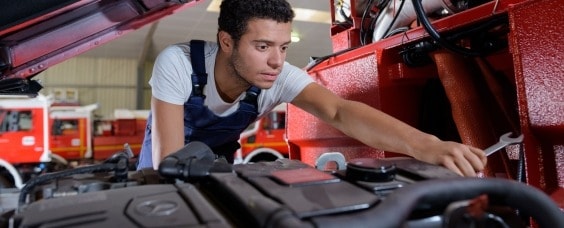Rolling resistance is impacted by uneven wear. When a tyre doesn’t roll smoothly, more fuel is needed to keep it running. Even worse, the lifespan of the tyre is reduced so you must pay for new tyres more often. Correct inflation and alignment are the two most important factors in long tyre life. A misaligned vehicle wastes rubber and it’s important to remember that all uneven wear costs fuel.
Inflation
Maintaining correct tyre inflation should be the day to day responsibility of drivers. As a fleet manager you don’t have the time to do this. Drivers know their vehicles and can feel where their vehicles are underperforming.
When checking inflation, drivers should also be checking for uneven wear. Significant uneven wear will be hurting the cost per km and as a fleet manager you need to know about it.
Rotation
On average, most fleets can expect to do a complete tyre rotation for every long haul vehicle every 25,000 kilometres or so. However, this varies widely due to different loads, driving habits, truck setups and road conditions.
Different rotation patterns should be followed to tackle different types of wear issues. Understand the situation by examining each and every tyre and rotate them as suggested in the user manual of the vehicle. Tyres can also be rotated as a preventive measure at regular intervals in a specific pattern to improve overall tyre life.
Alignment
When a vehicle is aligned, it means that all the tyres are rolling in the same direction that the vehicle is travelling in. Tyre alignment should be checked if any irregular tyre wear has been reported or the vehicle is pulling to one side or even dog-tracking. This can also correspond with tyre rotation. While every truck is different, a general guide is to do your alignments at the same time you replace the tyres.
Tyres usually operate with heavy loads and in challenging conditions, which increases the need to check alignment. On a vehicle that has tandem axles, like a truck, aligning only the front end is only doing a small part of the job. A misaligned drive and trailer axle leads to scrub and thrust forces that contribute to irregular wear, steering pull, and driver fatigue.
Uneven wear typically shows on steer tyres. However, these are commonly created by misaligned drive and trailer tyres. In particular, drive axles have a huge impact on a vehicle’s overall alignment.


